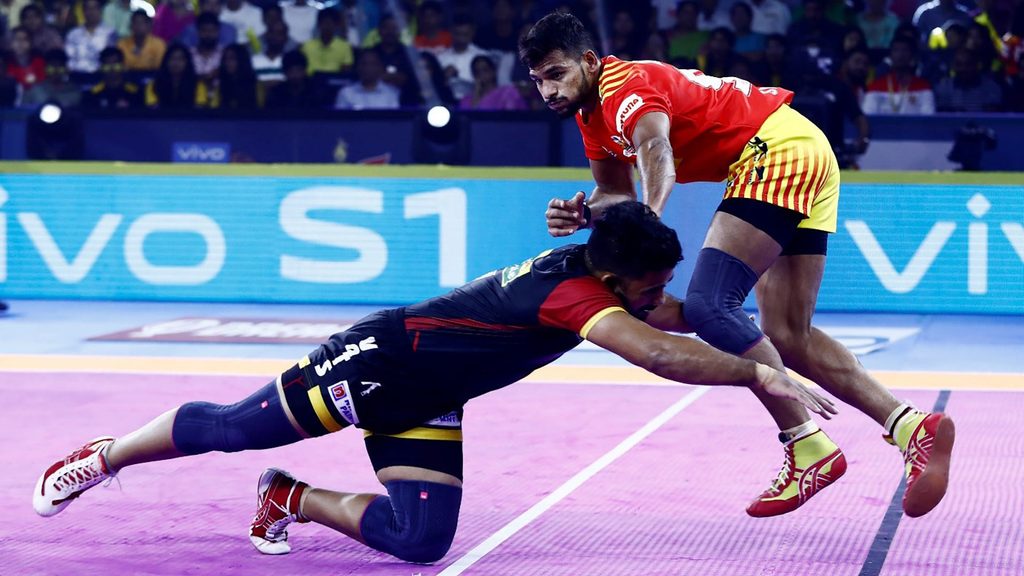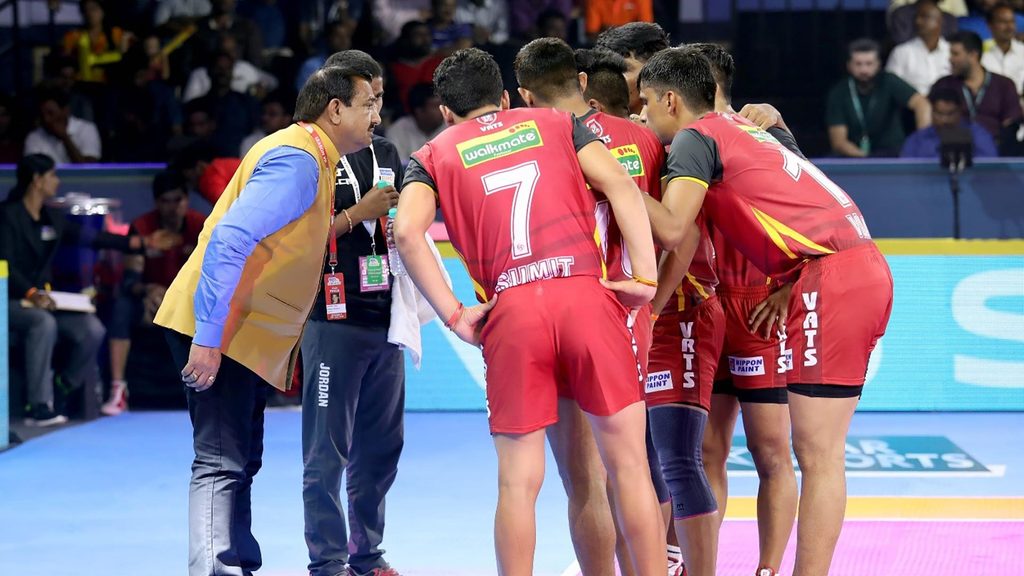How integral is quick reaction in kabaddi? A closer look with expert insights

Kabaddi is a game of fine margins and it is often these minuscule details that eventually decide the outcome of a contest. The nature of the sport is such that a delay of even a split second in executing a move could cost a team dearly given the role of momentum in the game. Strong reflexes and reactions in live match-situations are, of course, imperative qualities to have for any player to succeed in the sport.

Bengaluru Bulls’ star defender Mahender Singh – currently among the top names in the Super Tackles chart in Season 7 – and coach Randhir Singh Sehrawat spoke to prokabaddi.com to help elucidate just how important split-second reactions to an opponent’s actions are to a player.
Swift reactions more crucial than raw strength
Bengaluru Bulls’ powerhouse defender Mahender insisted that strength isn’t the most vital parameter in kabaddi. Instead, judging when a raider makes or fakes a manoeuvre is key to a successful tackle.
“When a player comes to raid, it’s easy to just fall into the trap of trying to overcome him with strength and brute force. But more experienced defenders tend to react to the action of the raider. Getting the raider tired by constantly avoiding his movements is also helpful. Sometimes raiders also tend to fake a lot of their movement and it’s important not to fall for that,” Mahender said.
“There’s no time to think much during matches. For example, when a raider comes for a bonus and I react correctly and am close to his feet then I can guarantee a tackle. Even the slightest delay in attempting to do so will result in the raider picking up points. However, if the raider fakes, then we have to curb our natural instinct and avoid committing to the tackle. These are things we need to keep in mind as far as actions and reactions are concerned,” he added.
Mahender also made it clear that practice and hard work are the only ways to master the art of reacting correctly. He shed more light on the strict training regimens that players have to go through besides the regular skill training to sharpen their instincts and make reactions more natural to them.
“When a raider comes to raid and he’s executing the Running Hand Touch really well, we know that trying to attack his upper body can be risky. Hence, our instinct tells us to attack the feet of the raider, because if we do that successfully then he won’t manage to escape. Like the hand touch, there are other skills that raiders have and we react to deny them accordingly. The more you practice, the better it is since these reactions start coming to you naturally after a point. Avoiding a raider is also an important part of reacting.”
Assess your prey before hunting them down
Coach Randhir Singh Sehrawat, a decorated former player himself, looked at the role that swift reactions play through a raider’s lens. He explained the process of training that he goes through with raiders in order to train their natural instincts.

“We have pre-season camps where we train a player’s reactions,” Randhir explained. “I work with my players on how to react while raiding against a defence of six, seven, three or two players, since those are the toughest to crack. If it is a Do-or-Die raid and there are five players on court, then they need to know how to react to that as well.”
The Bengaluru Bulls coach further went on to shed some light on exactly what kind of training goes into training a raider to sharpen his reactions.
“From my experience, I know that raiders can give themselves a chance of scoring a point by assessing the Right and Left Corners in the first five seconds of the raid. They must check who is in what position. It’s important not to rush things and give yourself time to assess the Corners. Then if you see that the Corner defenders are sitting deep, for example, try for the bonus point. If the Corner defender is closer to the midline, use your reach to get a touch point. Taking quick decisions within five seconds is crucial,” he added.
“It’s all about observing what your opponent is doing and anticipating what moves he’s going to try,” summed up Mahender, “We have to train our instincts to react accordingly without a second thought. That is what finally gets you ready for an actual match situation.”
Related tags:
Latest Updates
- © Pro Kabaddi
- Terms & Conditions
- Privacy Policy
- Cookie Policy
Powered by: Sportz Interactive
